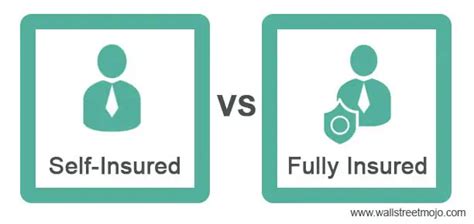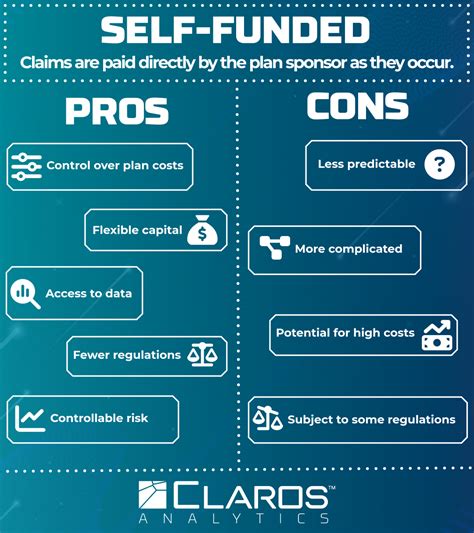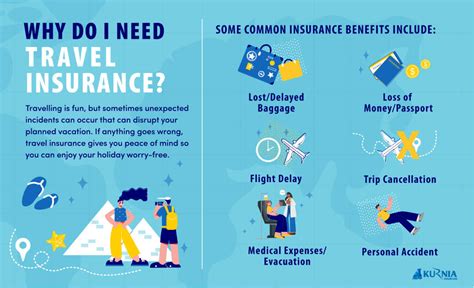Selfinsured

Self-insurance is a financial strategy employed by businesses and organizations to manage their healthcare or general liability risks without relying on traditional insurance carriers. Instead of purchasing insurance policies, self-insured entities assume the financial responsibility for their own risks, often utilizing a combination of strategies and risk management techniques to mitigate potential losses. This approach offers several advantages, including cost-effectiveness, flexibility, and the potential for better control over healthcare services and claims management. However, it also comes with increased financial risks and the need for robust risk management practices.
Understanding Self-Insurance

Self-insurance, also known as self-funding or self-pay, is a business model where companies take on the financial liability for their healthcare or general liability claims rather than transferring that risk to an insurance company. This strategy is particularly popular among larger corporations and organizations that have the financial resources and expertise to manage their own risks effectively.
For healthcare self-insurance, the company sets aside funds to cover the cost of employee healthcare services and claims. This fund is often managed by a third-party administrator (TPA) who handles claims processing, provider networks, and other administrative tasks. The TPA ensures that the self-insured entity adheres to relevant healthcare regulations and manages the financial risks associated with employee healthcare needs.
In the context of general liability, self-insurance involves the entity setting aside funds to cover potential losses from accidents, property damage, or other liability claims. This strategy is often used in conjunction with risk management techniques to minimize the likelihood and impact of such incidents.
Advantages of Self-Insurance

Cost-Effectiveness
One of the primary advantages of self-insurance is its potential for cost savings. By self-insuring, businesses can avoid the high premiums often associated with traditional insurance policies. This is particularly beneficial for companies with a healthy and relatively low-risk employee population, as they can keep their costs down by not paying for coverage they may not need. Additionally, self-insured entities have more control over their budget and can allocate funds more efficiently based on their specific risk profile.
Flexibility
Self-insurance offers a high degree of flexibility. Companies can tailor their healthcare plans and liability coverage to their specific needs, allowing for more innovative and employee-centric benefit designs. This flexibility extends to the ability to quickly adapt coverage and services based on changing business needs or market conditions.
Control Over Healthcare Services
Self-insured entities often have more control over the healthcare services provided to their employees. They can negotiate directly with healthcare providers and pharmacies to secure competitive rates and ensure that the quality of care meets their standards. This level of control can lead to better healthcare outcomes and employee satisfaction.
Claims Management
In a self-insured model, the company has direct oversight of the claims process. This allows for more efficient claims handling, as the entity can make decisions quickly and adapt its claims management strategies as needed. Self-insured entities can also implement more rigorous fraud detection and prevention measures, reducing the risk of fraudulent claims.
Challenges and Risks
Financial Risks
The primary challenge of self-insurance is the potential for large, unexpected claims. If a company’s self-insured fund is not adequately funded or if a significant number of high-cost claims occur in a short period, the entity may face financial difficulties. This risk is particularly acute for smaller businesses with limited financial reserves.
Administrative Burden
Self-insurance requires a significant administrative effort. The company must dedicate resources to managing the self-insured fund, negotiating with healthcare providers, and administering claims. This can be a challenge for smaller businesses that may not have the necessary expertise or resources.
Regulatory Compliance
Self-insured entities must comply with a complex web of healthcare and liability regulations. Failure to adhere to these regulations can result in significant penalties and legal consequences. Ensuring compliance requires a thorough understanding of the relevant laws and the ability to adapt to changing regulations.
Risk Management Strategies
To mitigate the risks associated with self-insurance, entities employ a range of risk management strategies. These may include:
- Stop-Loss Insurance: This is a form of insurance that protects the self-insured entity from extremely large or catastrophic claims. It provides a safety net by covering claims that exceed a certain threshold, helping to manage financial risks.
- Risk Pooling: By joining forces with other self-insured entities, companies can spread the risk across a larger pool, reducing the financial impact of individual claims.
- Claims Monitoring and Management: Self-insured entities can implement robust claims management systems to identify potential issues early on, negotiate favorable settlements, and minimize the overall cost of claims.
- Risk Assessment and Mitigation: Regular risk assessments help identify potential hazards and vulnerabilities. By implementing measures to mitigate these risks, entities can reduce the likelihood and impact of claims.
Performance Analysis

Evaluating the performance of a self-insured program involves several key metrics. These may include:
| Metric | Description |
|---|---|
| Claims Incurred | The total cost of claims paid out during a specific period. |
| Stop-Loss Claims | The amount paid by the stop-loss insurance provider to cover large claims. |
| Administrative Costs | Expenses associated with managing the self-insured fund and administering claims. |
| Claims Severity | The average cost of claims, indicating the level of risk. |
| Claims Frequency | The rate at which claims are made, influencing overall costs. |

Future Implications
The self-insurance model is expected to continue evolving, particularly as businesses seek more control over their healthcare and liability risks. With advancements in technology and data analytics, self-insured entities will have access to more sophisticated tools for risk management and claims analysis. This could lead to even greater cost savings and improved efficiency.
However, the increasing complexity of healthcare regulations and the potential for large, unpredictable claims will continue to pose challenges. As such, self-insured entities will need to remain vigilant in their risk management practices and stay informed about evolving industry trends and best practices.
What are the key advantages of self-insurance for healthcare?
+Self-insurance for healthcare offers cost savings, flexibility in benefit design, control over healthcare services, and efficient claims management. This approach allows companies to tailor healthcare plans to their specific needs and employee demographics, potentially improving healthcare outcomes and employee satisfaction.
How do self-insured entities manage the risk of large claims?
+Self-insured entities use a combination of strategies, including stop-loss insurance, risk pooling, and robust claims management systems. These strategies help spread the financial risk and ensure that large claims do not overwhelm the self-insured fund.
What are the regulatory considerations for self-insurance?
+Self-insured entities must comply with a range of healthcare and liability regulations, including ERISA, HIPAA, and state-specific laws. Non-compliance can result in significant penalties, so it’s crucial for entities to stay informed and seek expert advice when needed.



